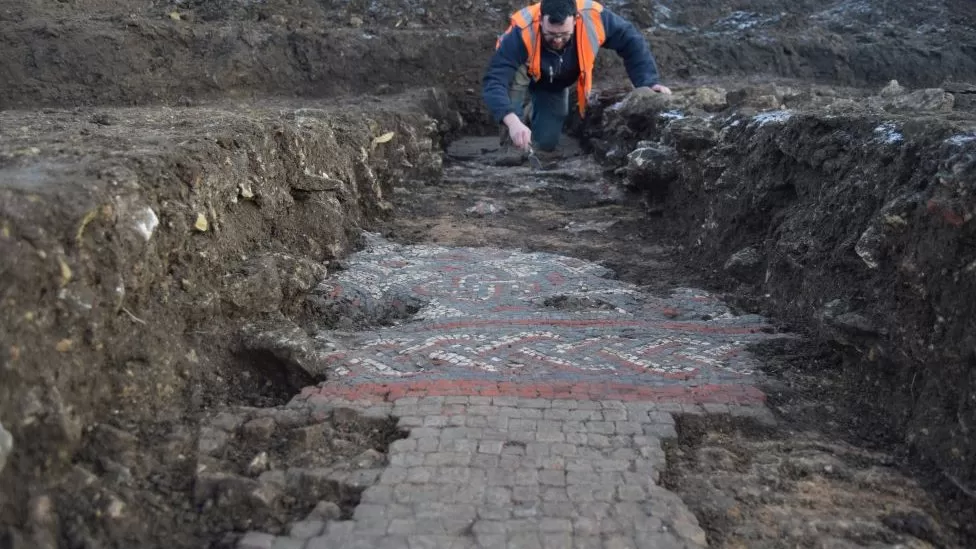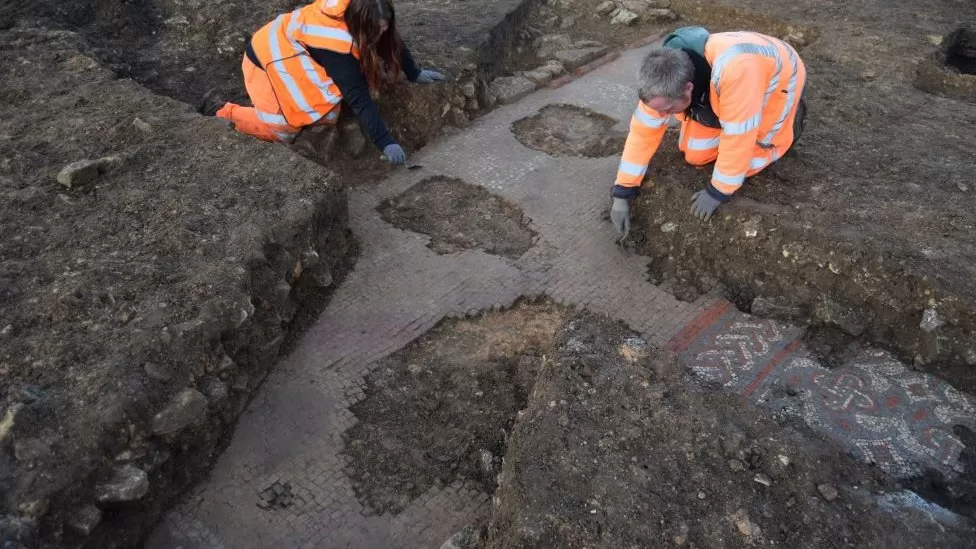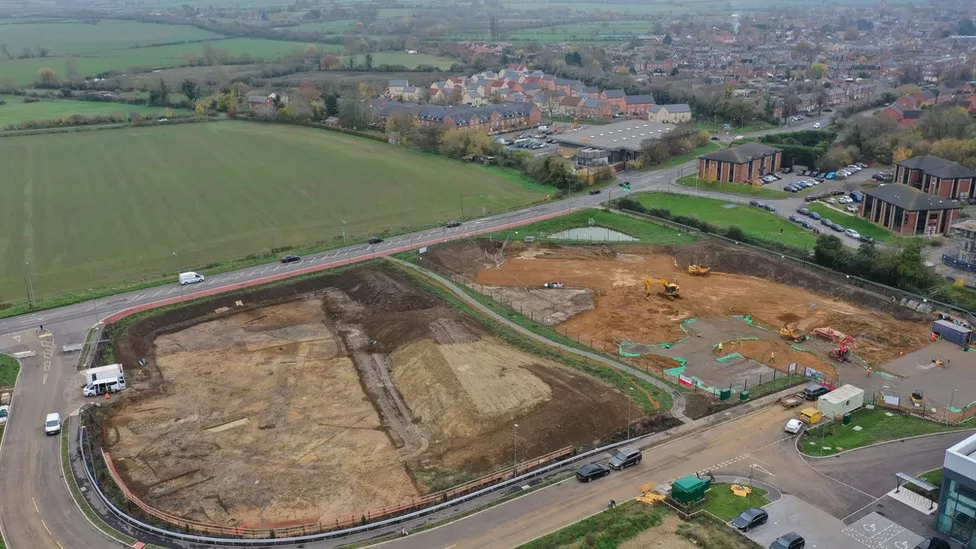Roman villa mosaic found under Aldi supermarket site

Archaeologists have uncovered what they believe are the remains of a Roman villa and bath house under land earmarked for a supermarket.
The discovery, which features mosaic brickwork, was made in Warrington Road in Olney, Buckinghamshire.
The site is being prepared for the construction of a new Aldi supermarket.
Oxford Archaeology, who carried out the work for developer Angle Property, deemed the mosaic “archaeological remains of high significance”.
The dig was commissioned due to the site’s proximity to the existing Roman Site at Olney.
Archaeologists said the mosaic featured “vibrant colours and intricate decorative patterns” made up of red, white and blue tiles.

Much of the ancient artworks were believed to extend under Warrington Road so could not be fully investigated, the digl team said.
Oxford Archaeology said that following consultations with Historic England and Milton Keynes Council, the mosaic has been preserved in situ.
It means materials have been placed over the brickwork to protect it, to allow construction to continue without causing damage.
John Boothroyd, senior project manager at Oxford Archaeology, said: “Due to the site location we anticipated some notable Roman remains, but the discovery of this fantastic mosaic far exceeded those expectations.
“To be able to preserve remains of this quality and importance is a brilliant outcome, and one that could only have been achieved with the support of Angle Property.”
Anthony Williamson, executive director of Angle, said the find had “taken us all by surprise” and promised it “will be fully recorded” and information about it published.
